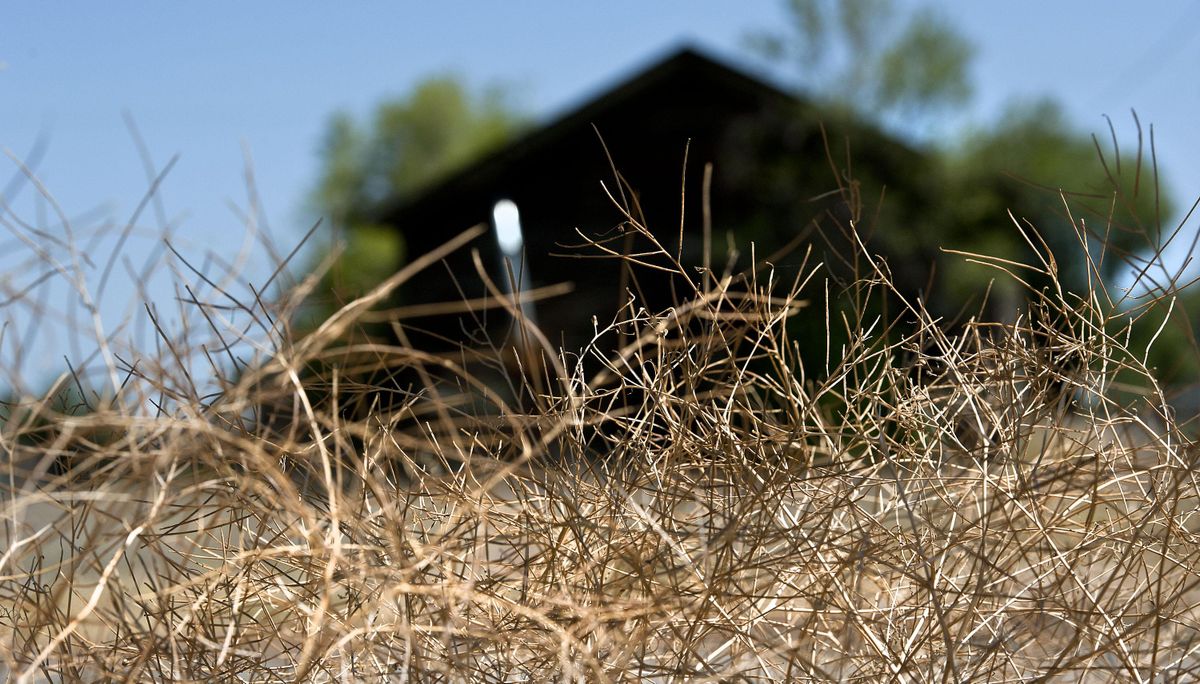Slow start to wildfire season may foretell late end

Spokane’s wildfire season has been mild so far, helped by colder weather, but firefighters are ready for a late start.
“We’ve been blessed so far,” Spokane Fire Department Chief Brian Schaeffer said.
Among other benefits, Schaeffer said the slow wildfire season has saved money for the fire department, noting that the department’s current budget for overtime for firefighters is $240,000 less today than it was last year.
But the good run may not last.
Fire officials and meteorologists are expecting the remainder of the summer to be hotter and drier, which will likely lead to more fires.
“In the past, when we have had similar slow starts to the season, we have seen the fire season extend further into September,” he said.
Mark Turner, meteorologist at the National Weather Service in Spokane, said that expecting a later fire season due to a slow start makes sense.
“We know it could be coming,” he said.
July’s weather was drier and cooler than average, he said.
“Spokane had three days above 90 degrees in July, which is kind of low for us,” Turner said. “Typically, in July, we see seven or more.”
Last July, Spokane had 14 days that reached over 90 degrees.
“We got a lot of comments about how mild the summer has been,” Turner said.
Forrest Ownby, spokesman for the Department of Natural Resources, said that this fire season has drawn about the same number of calls and responses, but those calls have been for smaller fires mainly because July was cooler and wetter than normal and fires did not spread as fast.
“In June and July we’ve had cooler temperatures and a little moisture, which has actually kept the fire season at bay,” he said.
Smoky air has been mostly absent from Spokane, apart from a few days in early June, too, Ownby said.
“Last year, we had Canadian fires that drifted down,” he said. “So far, the areas around us have not seen those fires and that has led to clearer skies.”
Despite a slow start to the fire season, last month wasn’t void of fires.
The Cheney Complex Fire consisted of four fires that burned 171 acres but damaged no structures. Those fires started after a storm hit Spokane July 23 and lightning struck the ground and trees, leaving burning embers. It also brought rain, which doused some of the fuel and prevented fires, too, Turner said.
Schaeffer also said that the fire season can last as late as October, like in 1991, when more than 100 fires burned in Spokane County, consuming more than 100 homes and killing one person.
Last year, the worst of Spokane’s fire season happened in July, when a wildfire near Camp Sekani Park burned a home and 115 acres.
And weather, of course, is unpredictable, meaning dangerous conditions can emerge at almost any time.
The National Weather Service issued a Fire Weather Watch for Thursday night and Friday morning for more than seven counties west of – but not including – Spokane County.
On Thursday night, forecasters expected a dry lightning storm to hit the region, Turner said.
High winds expected on Friday would also increase the threat of wildfire. Gusts of 15 to 20 miles per hour are expected to sweep across Spokane, according to Turner.
“That’s got us concerned,” he said.
Spokane County and city are under burn bans, and any open outdoor flame is banned unless it has an attached chimney.